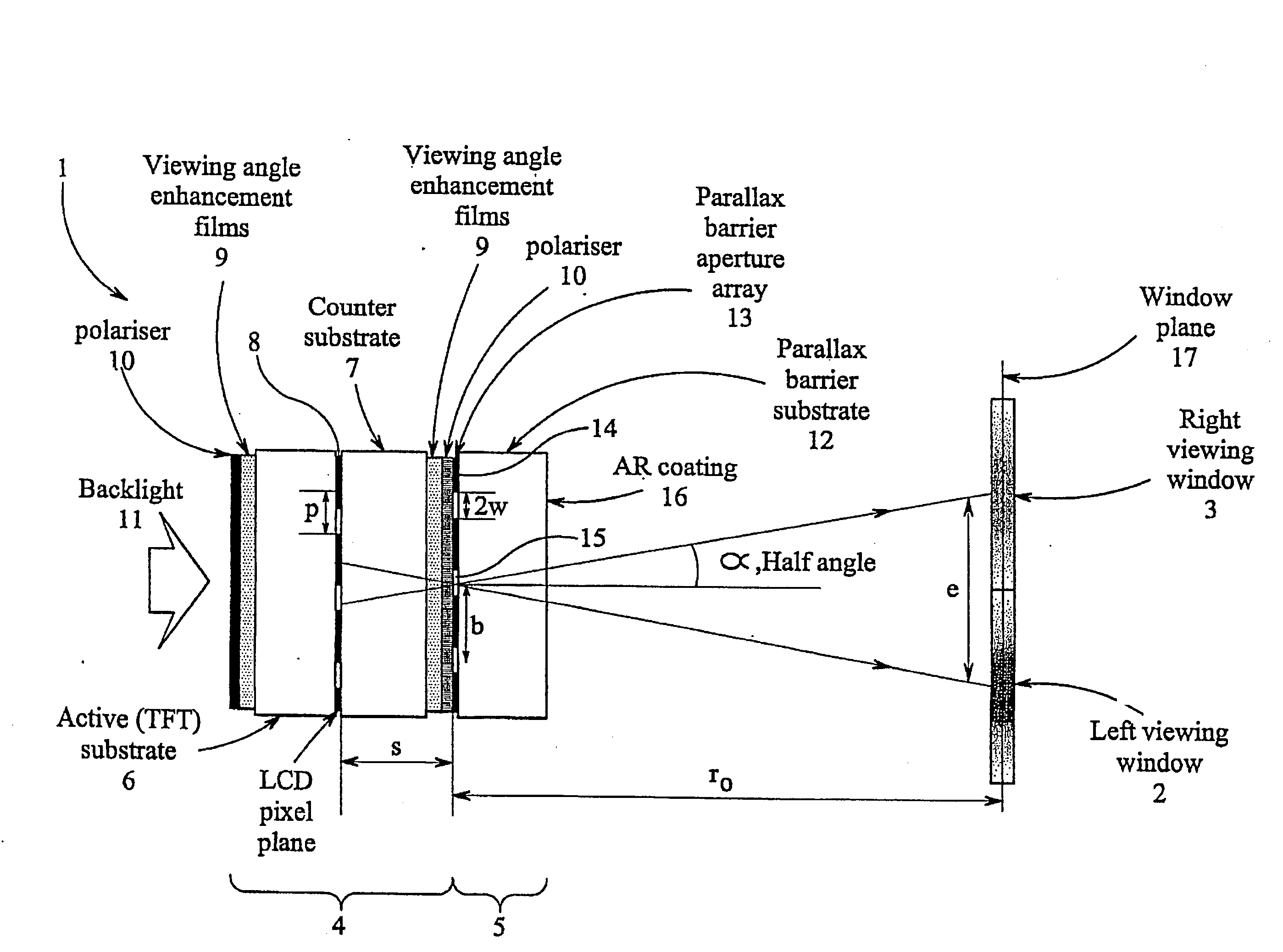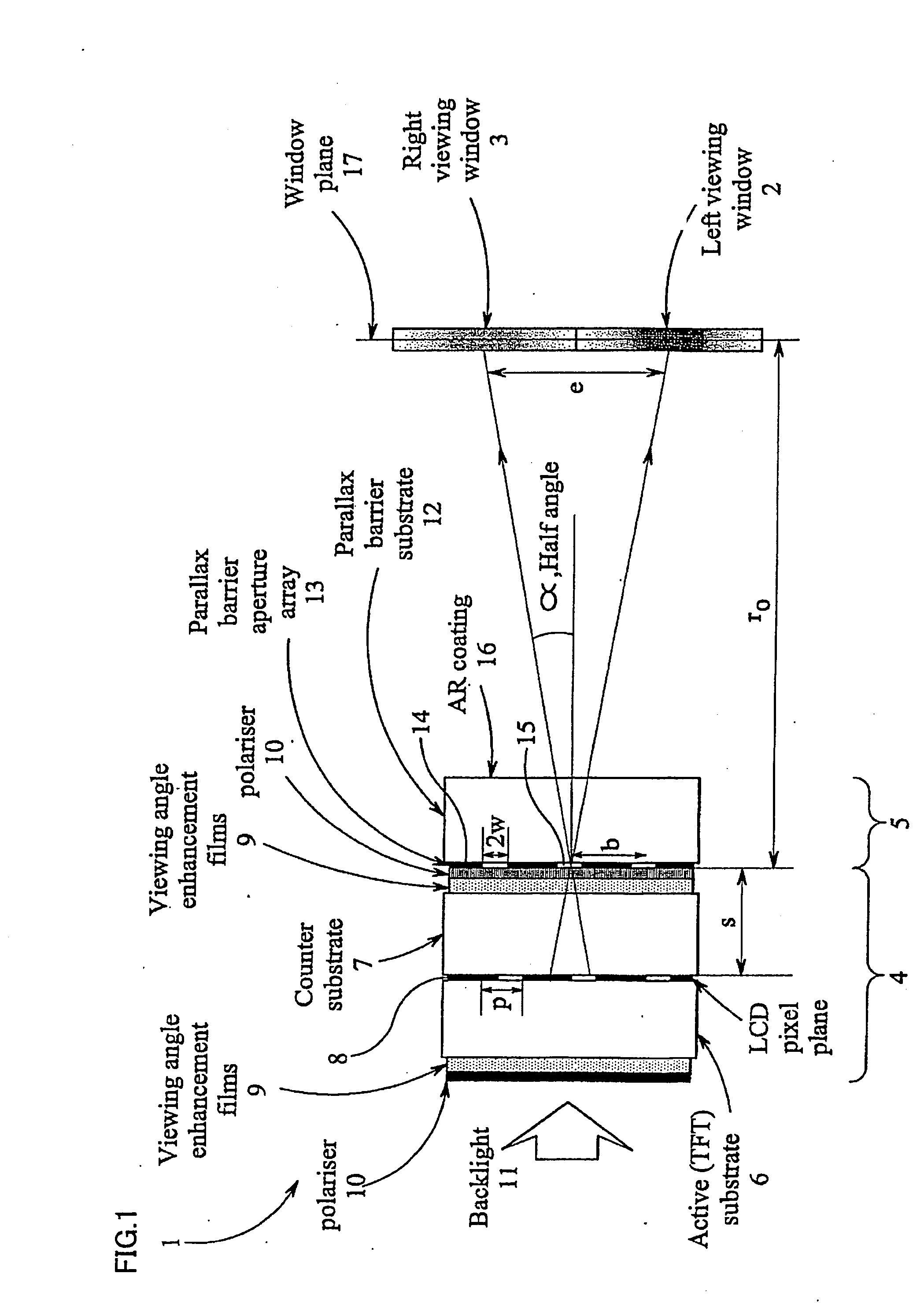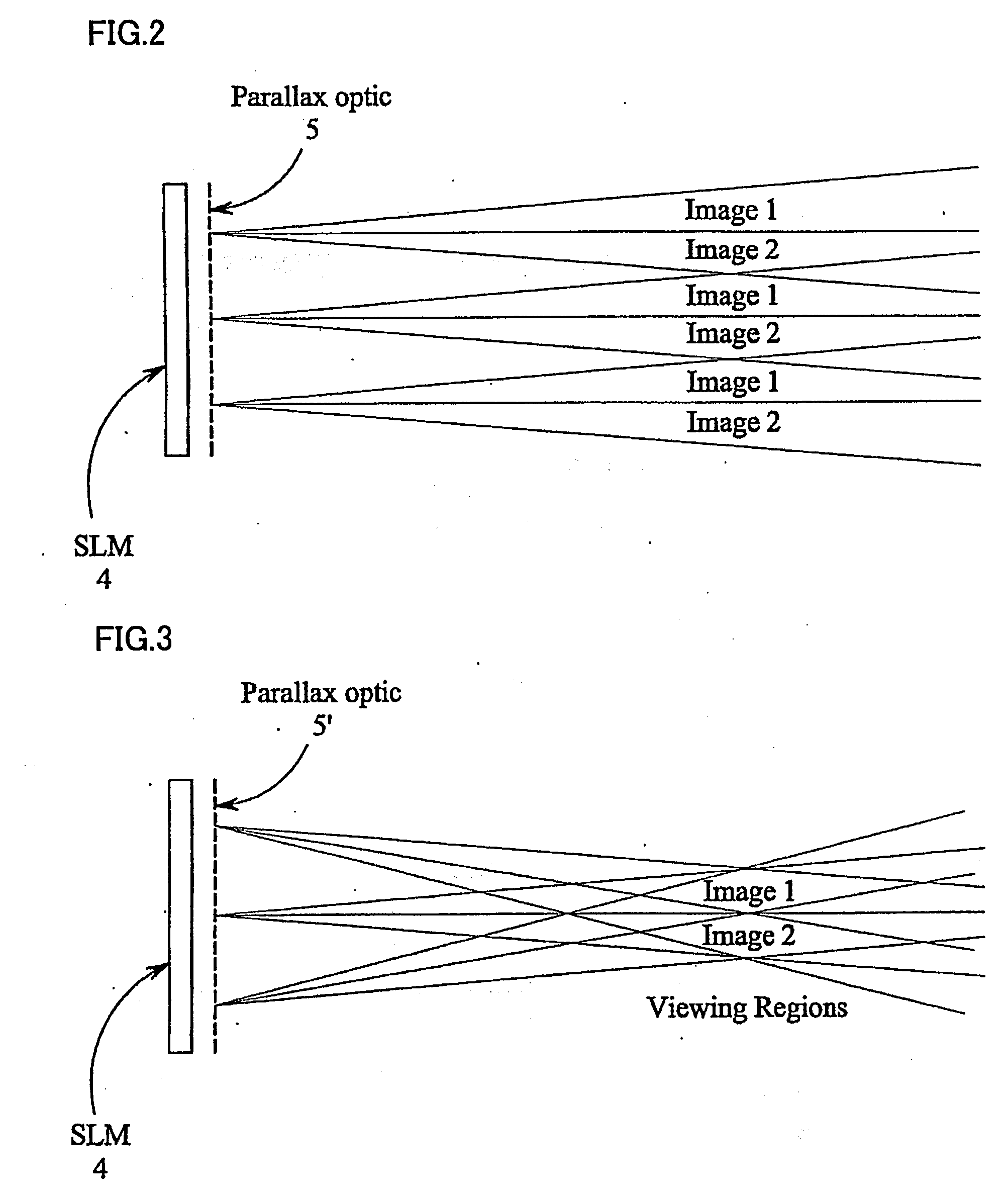Multiple-Viewer Multiple-View Display And Display Controller
a multi-viewer, display controller technology, applied in the direction of instruments, static indicating devices, optical elements, etc., can solve the problems of increasing cost, occupying a lot of space, and providing a separate display screen for each player, so as to achieve little or no penalty, the effect of crosstalk visibl
- Summary
- Abstract
- Description
- Claims
- Application Information
AI Technical Summary
Benefits of technology
Problems solved by technology
Method used
Image
Examples
Embodiment Construction
[0101]FIGS. 7 and 8 illustrate diagrammatically front and cross-sectional views of a multiple viewer multiple view display for simultaneously displaying left and right images so that these can only be seen by viewers from directions to the left and right of the normal to the display. The display comprises a spatial light modulator in the form of a transmissive liquid crystal (LC) panel 20 with a backlight (not shown) and a front parallax barrier 21. The LC panel 20 comprises substrates 22 and 23 between which are formed pixels L and R for displaying spatially multiplexed or interlaced left and right views for viewing in the directions indicated by the arrows 24 and 25, respectively. The angle between the viewing directions is indicated at θ. The parallax barrier 21 is formed on a substrate 26 so that the pixel plane of the panel 20 is disposed between the substrates 22 and 23 and the barrier plane is disposed between the substrates 22 and 26.
[0102]As shown in the front view in FIG. ...
PUM
 Login to View More
Login to View More Abstract
Description
Claims
Application Information
 Login to View More
Login to View More - R&D
- Intellectual Property
- Life Sciences
- Materials
- Tech Scout
- Unparalleled Data Quality
- Higher Quality Content
- 60% Fewer Hallucinations
Browse by: Latest US Patents, China's latest patents, Technical Efficacy Thesaurus, Application Domain, Technology Topic, Popular Technical Reports.
© 2025 PatSnap. All rights reserved.Legal|Privacy policy|Modern Slavery Act Transparency Statement|Sitemap|About US| Contact US: help@patsnap.com



